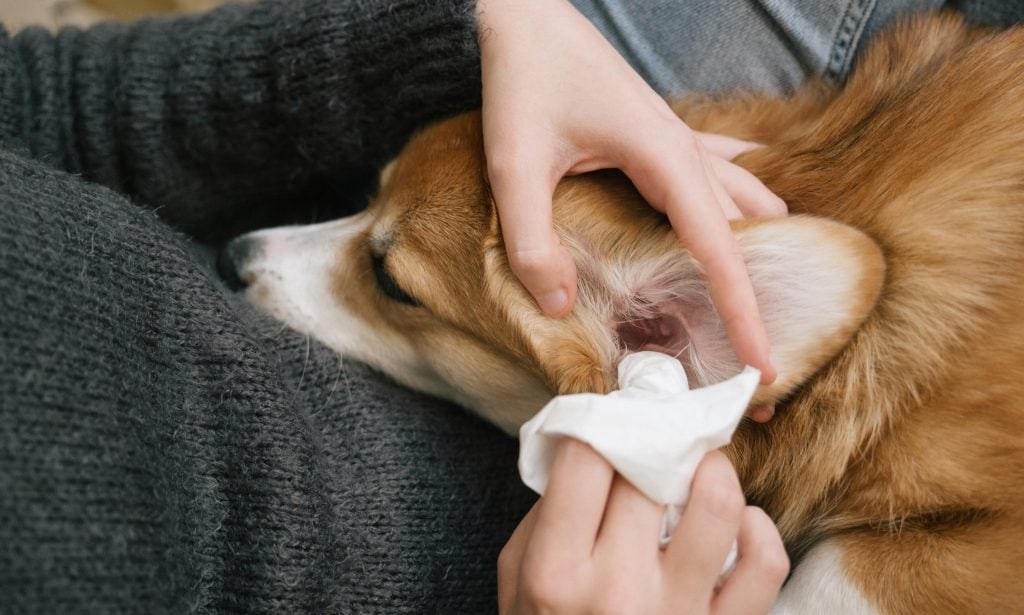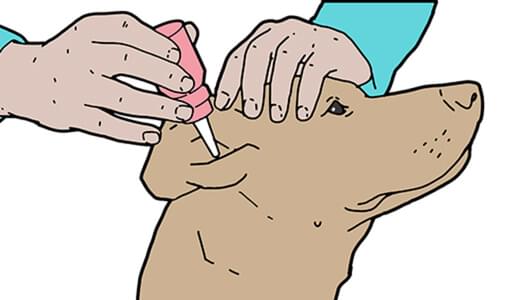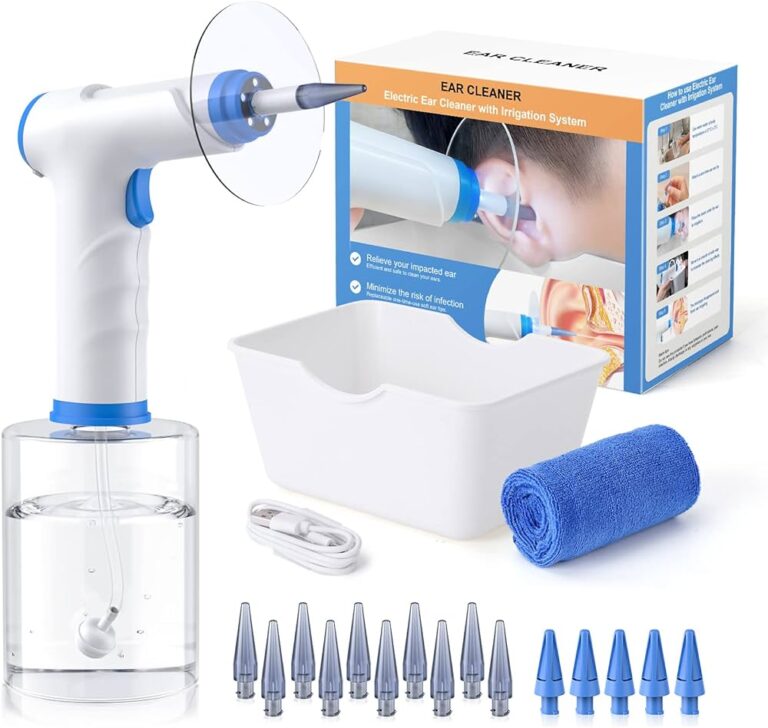Struggling to put ear drops in your dog? Make the experience more pleasant by remaining calm, using treats and praise, warming the drops, and limiting the dog’s vision.
Additional techniques include using a cotton ball or syringe, getting help from a friend, and making the actions consistent and natural. If your dog is uncooperative for a long period of time, consider talking to a vet for further advice.

Credit: www.texvetpets.org
Understanding The Challenge
Struggling to put ear drops in your dog? Learn techniques to make the experience more pleasant, such as remaining calm, using treats and praise, and limiting the dog’s vision. Get tips and advice from experts on how to give ear drops to uncooperative dogs.
Understanding the ChallengeWhen it comes to caring for our beloved furry friends, it’s important to ensure their overall well-being, including proper ear care. However, one common challenge faced by many pet owners is the resistance their dogs show when it comes to putting ear drops in. This can be a frustrating and worrisome experience, as ear drops are often necessary to treat infections, relieve discomfort, and maintain ear health. In order to address this challenge effectively, it’s crucial to understand why dogs resist ear drops, the importance of proper ear care, as well as common concerns and misconceptions.Why dogs resist ear dropsDogs have a natural instinct to protect themselves, and their ears are no exception. It’s not uncommon for dogs to become anxious or fearful when they see a bottle of ear drops or feel something entering their ears. This may be due to previous negative experiences, the discomfort of the drops, or simply a fear of restraint. Understanding this resistance is the first step in finding solutions to make the process more comfortable for both you and your furry friend.The importance of proper ear careProper ear care is essential to ensure your dog’s overall health and well-being. Just like humans, dogs can suffer from various ear problems, including infections, ear mites, allergies, and wax buildup. If left untreated, these issues can lead to discomfort, pain, and even hearing loss. Regularly cleaning your dog’s ears and administering prescribed ear drops when necessary can help prevent and manage these problems. By taking proactive steps to maintain your dog’s ear health, you’re ensuring they live a happy and pain-free life.Common concerns and misconceptionsWhen it comes to using ear drops on dogs, there are common concerns and misconceptions that pet owners often encounter. Some may worry about hurting their dogs or causing further discomfort. Others may struggle with finding the most effective way to administer the drops without causing stress or resistance. It’s important to address these concerns and misconceptions so that pet owners can confidently and effectively care for their dog’s ears. Additionally, seeking guidance from a veterinarian can provide reassurance and expert advice on the best practices for administering ear drops. In conclusion, understanding why dogs resist ear drops, recognizing the importance of proper ear care, and addressing common concerns and misconceptions are crucial steps in overcoming the challenge of administering ear drops to your furry friend. By approaching this task with patience, knowledge, and the right techniques, you can ensure the health and comfort of your dog’s ears, ultimately strengthening the bond between you and your canine companion.
Credit: be.chewy.com
Techniques To Make The Process Easier
Putting ear drops in a dog that won’t cooperate can be a challenging task for any pet owner. However, with the right approach and some helpful techniques, you can make the process easier and less stressful for both you and your furry friend. Below are some effective techniques to try:
Remaining Calm And Patient
Remaining calm and patient is key when dealing with a dog that won’t let you put ear drops in. Dogs can sense your tension, so it’s important to stay calm and relaxed throughout the process. Take deep breaths, speak in a soothing tone, and avoid rushing or forcing the drops into your dog’s ears. Remember, dogs are highly intuitive creatures and can pick up on your energy.
Using Tools And Techniques To Assist
Using tools and techniques to assist can make the process of putting ear drops in your dog’s ears much easier. One helpful tool is a cotton ball. Gently place the cotton ball in your dog’s ear canal to help guide the drops in without overwhelming them. Another useful tool is a syringe. Fill the syringe with the prescribed amount of ear drops and gently insert it into the ear canal. Be sure to follow your veterinarian’s instructions on dosage and application.
Additionally, incorporating treats and praise as a positive reinforcement can help your dog associate the ear drops with something pleasant. Give your dog a treat after successfully administering the drops, and provide verbal praise and petting to reinforce good behavior.
Getting Help From A Friend Or Professional
If all else fails, getting help from a friend or professional can be beneficial. Enlist the assistance of a friend or family member to help hold and comfort your dog while you administer the ear drops. Having an extra set of hands can make the process smoother and less stressful for everyone involved. Alternatively, consider seeking the help of a professional, such as a veterinarian or dog trainer, who has experience in handling difficult situations.
Remember, each dog is unique, and what works for one dog may not work for another. It’s essential to be patient, adaptable, and willing to try different techniques until you find what works best for your dog. With time and consistency, you can make the process of putting ear drops in your dog’s ears a more manageable and stress-free experience.
Specific Tips And Tricks
When it comes to giving ear drops to your dog, it can often be a challenging task. Dogs can be finicky and resistant when it comes to any kind of medication administration. But fear not, there are specific tips and tricks that can help make the process easier and less stressful for both you and your furry friend. In this section, we will explore some effective techniques that you can use to successfully put ear drops in your dog’s ears.
Using Treats And Positive Reinforcement
One of the best ways to make the process of giving ear drops more pleasant for your dog is to use treats and positive reinforcement. Before you start the process, gather a handful of your dog’s favorite treats. Begin by showing your dog the ear drops and giving them a treat. Repeat this multiple times, gradually getting closer to actually putting the drops in their ears. Reward your dog with treats and praise after each successful attempt. This will help create a positive association with the ear drops and make your dog more willing to cooperate.
Warming The Drops For Comfort
Another tip that can make the experience more comfortable for your dog is to warm the ear drops before administering them. Cold drops can be uncomfortable and may cause your dog to become more resistant. To warm the drops, hold the bottle in your hands for a few minutes or run it under warm water. Make sure to test the drops on the back of your hand to ensure they are not too hot before applying them to your dog’s ears. Warm drops will be more soothing and can help relax your dog during the process.
Limiting The Dog’s Vision During The Process
Limiting your dog’s vision during the ear drop administration can help reduce their anxiety and make them more cooperative. Dogs can become anxious or scared when they see the bottle or the drops approaching. To prevent this, you can use a towel or a small blanket to cover your dog’s head, leaving only their ears exposed. This will create a calming and secure environment for your dog, making it easier for them to tolerate the ear drops.

Credit: www.petplan.co.uk
Frequently Asked Questions On My Dog Won’t Let Me Put Ear Drops In
How Do You Give Ear Drops To Uncooperative Dogs?
To give ear drops to uncooperative dogs: 1. Remain calm and make the experience pleasant. 2. Use a cotton ball or syringe for easy application. 3. Offer treats and praise as a reward. 4. Warm the drops. 5. Get help from a friend and limit the dog’s vision.
How Do You Give A Dog Ear Drops When They Hate It?
To give a dog ear drops when they hate it:1. Make the experience pleasant by remaining calm and using treats and praise. 2. Use a cotton ball or syringe to apply the drops. 3. Warm the drops for added comfort.
4. Get help from a friend for assistance. 5. Limit the dog’s vision to reduce anxiety.
How Do You Restrain A Dog For Ear Medication?
To restrain a dog for ear medication: 1. Remain calm and make the experience pleasant. 2. Use a cotton ball or syringe. 3. Use treats and praise to reward the dog. 4. Warm the drops and limit the dog’s vision. 5.
Get help from a friend if needed. (List obtained from regaldog. co. uk, dogstrust. org. uk, thepioneerwoman. com)
How Do You Clean My Dog’s Ears When They Won’t Let You?
To clean your dog’s ears when they won’t let you, gently lift their ear flap and squeeze enough ear cleaner to fill the canal. If that’s not possible, you can soak a cotton ball or gauze in the cleaner and apply it that way.
Be careful not to go deeper than your knuckle.
Conclusion
Struggling to put ear drops in your dog? Don’t worry, there are techniques to make the experience more pleasant. Remain calm, use a cotton ball or syringe, and offer treats and praise. You can also warm the drops or limit your dog’s vision.
If all else fails, seek help from a friend or consult your vet. Remember to stay positive and gentle throughout the process to ensure your dog’s cooperation.



